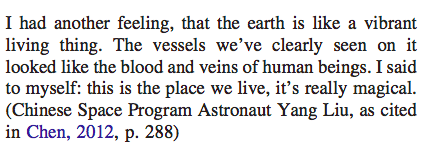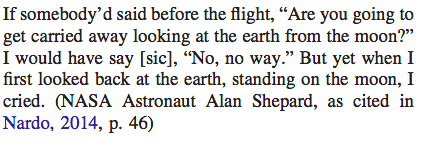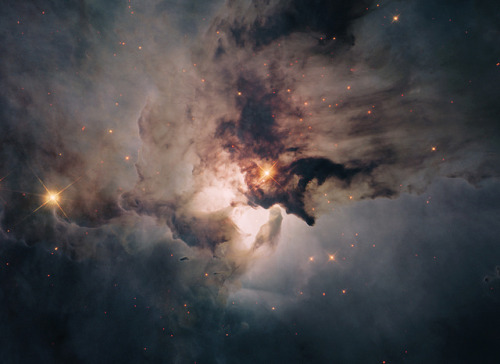Xnzda

More Posts from Xnzda and Others

The icy blue wings of Hen 2-437
The patterns and symmetries in space never cease to amaze. Hen 2-437 is a planetary nebula which has spectacularly symmetrical wings. It was first identified in 1946 by Rudolph Minkowski, who later also discovered the famous and equally beautiful M2-9, otherwise known as the Twin Jet Nebula:

Hen 2-437 was added to a catalogue of planetary nebula over two decades later by astronomer and NASA astronaut Karl Gordon Henize. If you’re interested in how planetary nebulae form, go here
Credit: ESA/Hubble & NASA


Astronauts talking about viewing the earth from the moon, from The Overview Effect: Awe and Self-Transcendent Experience in Space Flight

Grand Spiral Galaxy - M 100
Known as a grand design spiral galaxy, M100 is a large galaxy of over 100 billion stars with spiral arms that are like our own Milky Way Galaxy. This Hubble Space Telescope image of M100 was made in 2009 and reveals bright blue star clusters and intricate winding dust lanes which are hallmarks of this class of galaxies. Studies of variable stars in M100 have played an important role in determining the size and age of the Universe.
Credit: NASA/APOD
Five-dimensional black hole could 'break' general relativity
Cambridge UK (SPX) Feb 19, 2016 Researchers have shown how a bizarrely shaped black hole could cause Einstein’s general theory of relativity, a foundation of modern physics, to break down. However, such an object could only exist in a universe with five or more dimensions. The researchers, from the University of Cambridge and Queen Mary University of London, have successfully simulated a black hole shaped like a very thi Full article

The only home we’ve ever known. Clouds and sunlight over the Indian Ocean, as seen from Discovery during the STS-96 mission in 1999.
-
 lakeshirtsecurity reblogged this · 1 month ago
lakeshirtsecurity reblogged this · 1 month ago -
 lakeshirtsecurity liked this · 1 month ago
lakeshirtsecurity liked this · 1 month ago -
 catlizard reblogged this · 1 month ago
catlizard reblogged this · 1 month ago -
 catlizard liked this · 1 month ago
catlizard liked this · 1 month ago -
 markusjahlive reblogged this · 2 months ago
markusjahlive reblogged this · 2 months ago -
 alternatebrainiverse reblogged this · 2 months ago
alternatebrainiverse reblogged this · 2 months ago -
 bcblaze92 reblogged this · 2 months ago
bcblaze92 reblogged this · 2 months ago -
 hailkingcheeto liked this · 4 months ago
hailkingcheeto liked this · 4 months ago -
 detaras reblogged this · 4 months ago
detaras reblogged this · 4 months ago -
 annita89ecdwc7hsh liked this · 7 months ago
annita89ecdwc7hsh liked this · 7 months ago -
 betterdayscomin reblogged this · 9 months ago
betterdayscomin reblogged this · 9 months ago -
 betterdayscomin liked this · 9 months ago
betterdayscomin liked this · 9 months ago -
 dante11santos liked this · 1 year ago
dante11santos liked this · 1 year ago -
 coolgregmark13world liked this · 1 year ago
coolgregmark13world liked this · 1 year ago -
 coolgregmark13world reblogged this · 1 year ago
coolgregmark13world reblogged this · 1 year ago -
 anotherrumandwater liked this · 1 year ago
anotherrumandwater liked this · 1 year ago -
 scarletluvsdanno reblogged this · 1 year ago
scarletluvsdanno reblogged this · 1 year ago -
 scarletluvsdanno liked this · 1 year ago
scarletluvsdanno liked this · 1 year ago -
 brenli reblogged this · 1 year ago
brenli reblogged this · 1 year ago -
 purple-peaches reblogged this · 1 year ago
purple-peaches reblogged this · 1 year ago -
 o-fwteinos-agkalitsas liked this · 1 year ago
o-fwteinos-agkalitsas liked this · 1 year ago -
 starsinhereyesworld liked this · 1 year ago
starsinhereyesworld liked this · 1 year ago -
 starsinhereyesworld reblogged this · 1 year ago
starsinhereyesworld reblogged this · 1 year ago -
 filelicoraphastasibey liked this · 1 year ago
filelicoraphastasibey liked this · 1 year ago -
 mutethenoise reblogged this · 1 year ago
mutethenoise reblogged this · 1 year ago -
 nisasc reblogged this · 1 year ago
nisasc reblogged this · 1 year ago -
 djvma liked this · 1 year ago
djvma liked this · 1 year ago -
 mechatrnsatlanticfoe liked this · 1 year ago
mechatrnsatlanticfoe liked this · 1 year ago -
 midwestflamingo reblogged this · 1 year ago
midwestflamingo reblogged this · 1 year ago -
 midwestflamingo liked this · 1 year ago
midwestflamingo liked this · 1 year ago -
 purple-peaches liked this · 1 year ago
purple-peaches liked this · 1 year ago -
 talmeta reblogged this · 1 year ago
talmeta reblogged this · 1 year ago -
 i-smell-books reblogged this · 1 year ago
i-smell-books reblogged this · 1 year ago -
 xalasmenos-anapthras reblogged this · 1 year ago
xalasmenos-anapthras reblogged this · 1 year ago -
 eepybish reblogged this · 1 year ago
eepybish reblogged this · 1 year ago -
 what-the-helo liked this · 1 year ago
what-the-helo liked this · 1 year ago -
 evetheekitten reblogged this · 1 year ago
evetheekitten reblogged this · 1 year ago -
 ilove-all-these-things reblogged this · 1 year ago
ilove-all-these-things reblogged this · 1 year ago -
 ilove-all-these-things liked this · 1 year ago
ilove-all-these-things liked this · 1 year ago -
 blue-sky-full-of-stars reblogged this · 1 year ago
blue-sky-full-of-stars reblogged this · 1 year ago




